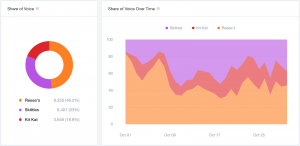A Lack Of Understanding About AI Makes Consumers Uncomfortable
by Laurie Sullivan , Staff Writer @lauriesullivan, (January 16, 2018)
Consumers still lack fundamental knowledge about artificial intelligence, which makes them standoffish and uncomfortable and raises concerns about sharing information through a variety of technology such as chatbots, despite Gartner’s estimate that by 2020, chatbots will handle 85% of customer service interactions.
Estimates are great, but how do consumers really feel about interacting with chatbots in search results and on brand websites, and how do they define having a valuable experience?
Findings from PointSource analyzing the state of consumer understanding and comfort with the adoption of artificial intelligence, specifically chatbots, found that 54% of consumers knew they were interacting with a chatbot. Some 41% said “no” and 5% said “I’m not sure” when asked.
When it comes to customer service, an overwhelming 80% said they prefer to resolve problems after making a purchase by talking with a human, 77% would rather get healthcare advice from a human, and 71% would rather ask questions to a human during an in-store shopping experience.
Daily interactions with advertisements from Amazon, Google, Facebook, Microsoft and others are integrated so seamlessly into the experiences that they feel normal for consumers searching on engines, social networks and brand sites. Still, many aren’t aware they share information with Google through keyword searches or Facebook social posts, and that advertisements they see online are built based on AI from those searches and posts.
About 46% admit to using Siri or Cortana, 22% said they use Amazon Echo, 16% use Google Home, 5% use another type of home device, 4% use Nest or another cooling or heating system, 4% rely on another type of home device, and 2% use a self-driving car.
PointSource suggests that “confusion around AI has not paved the way for more in-your-face experiences, making it particularly tough for applications like chatbots to earn adoption and enthusiasm” among consumers.
Only 26% of survey respondents are “very” willing to interact with a chatbot on the phone, 36% are “somewhat” willing, and 38% are “not” willing.
Some 35% of survey respondents are “very” willing to use a voice-controlled device to interact with a chatbot, 40% are “somewhat” willing, and 25% are “not” willing. About 32% of survey respondents are “very” willing to interact with a chatbot on a mobile phone, 38% are “somewhat” willing, and 34% are “not” willing. And 34% of survey respondents are “very” willing to interact with a chatbot on a desktop computer, 40% are “somewhat” willing, and 26% are “not” willing.
Experience seems to be the reason for the low scores. Only 16% were extremely satisfied with their experience, 39% were somewhat satisfied, 13% were somewhat unsatisfied, and 14% were not satisfied at all. Only 18% had both good and bad experiences.
Frustrations around accuracy and privacy are major consumers among consumers. Some 51% are frustrated when chatbots don’t understand what they’re looking for, 44% point to the accuracy of information, and 41% said privacy and security of their personal data are major concerns.
Of those participating in the survey, 32% are concerned about the security of personal data being shared with other companies, 23% are concerned about companies knowing too much personal information about them, and 22% said the experiences with chatbots tend to be more impersonal.
About 8% of survey takers didn’t know they used AI when asked about the specific kinds of devices they have used — a statistic the report suggests probably doesn’t capture the full extent of misunderstanding among consumers in the U.S.
When asked what would make consumers more comfortable when using a chatbot, 49% of respondents said they could escalate their interaction to a real human if necessary; 39% said being certain the information provided was accurate and up to date would make them more comfortable; 39% want a clear understanding of how their information will be used; 22% want an experience customized for them; and 14% said nothing would make them feel more comfortable about using a chatbot.
It also uncovers what’s standing in the way of consumer acceptance as companies make increasing investments in deep learning technology.
The data suggests 54% of consumers have used an AI appliomers want to switch to a chatbot after 5 min. have passed. However, 59% get frustrated if a chatbot doesn’t resolve their inquiry in that same time.
Want me to send over the full report? Let me know – I can connect you with Stephanie Trunzo, chief digital officer, or Barry Pellas, CTO and chief business technologist at PointSource, to discuss.
Best,
KP
(72)
Report Post





